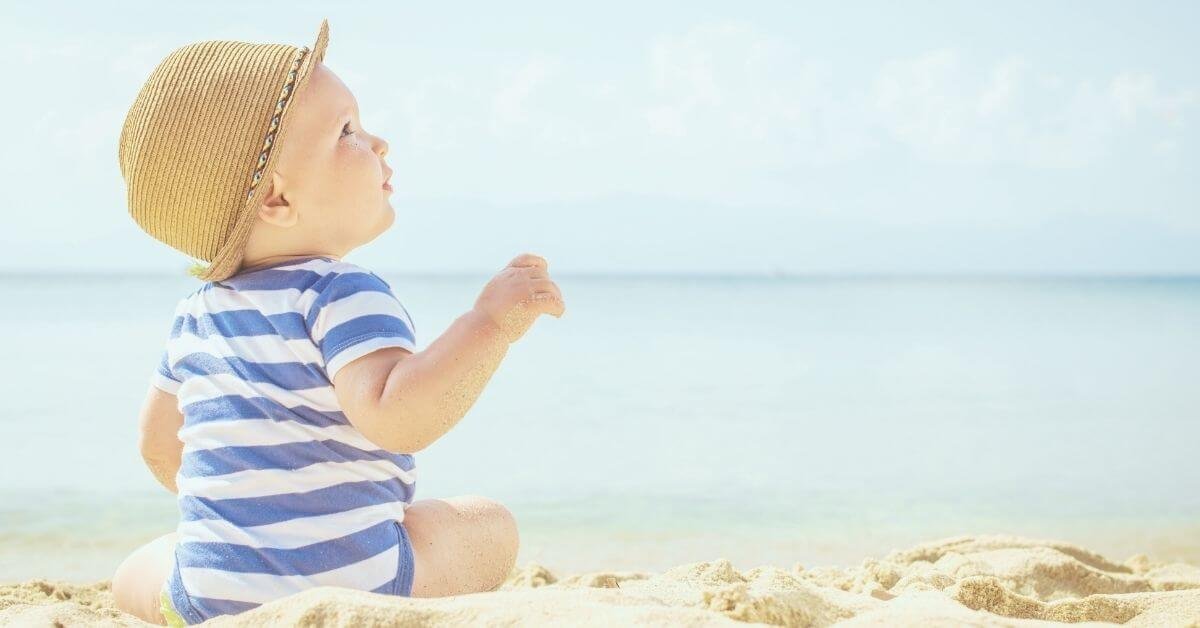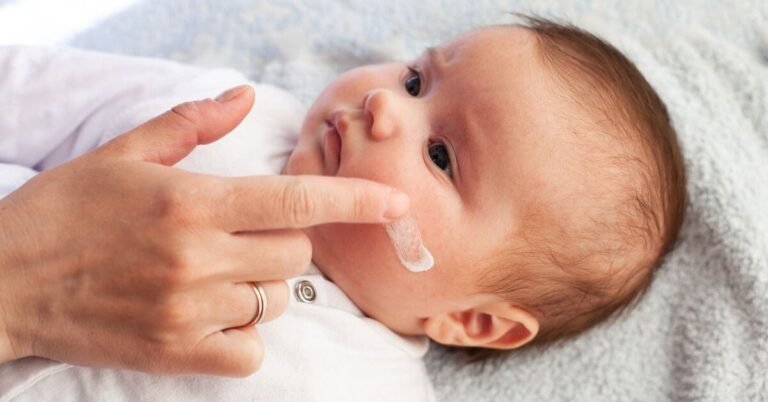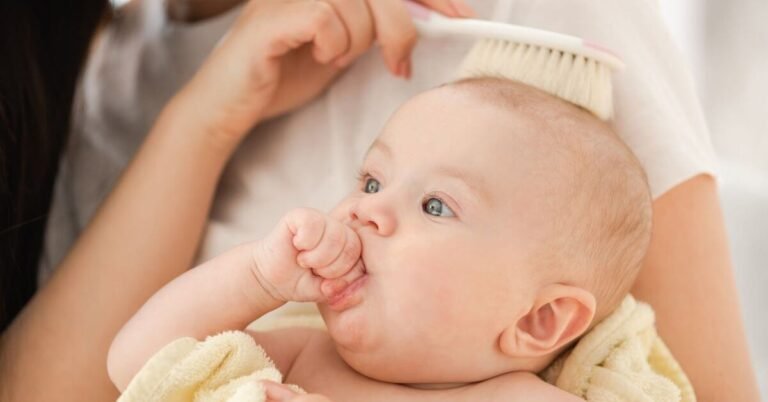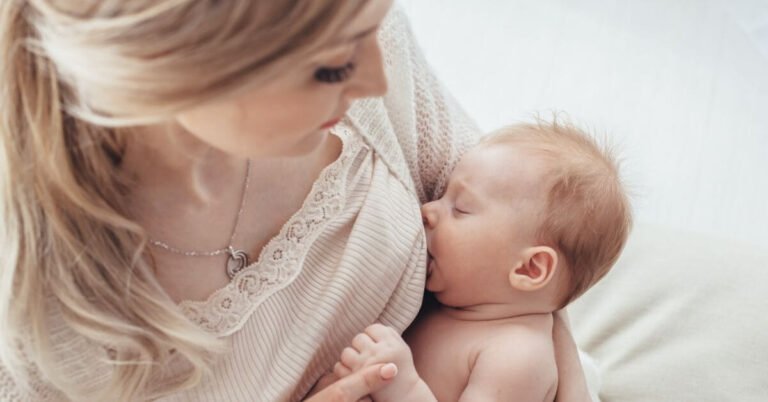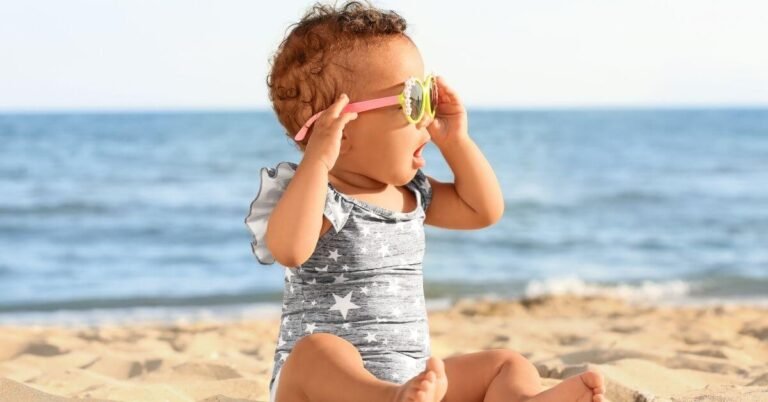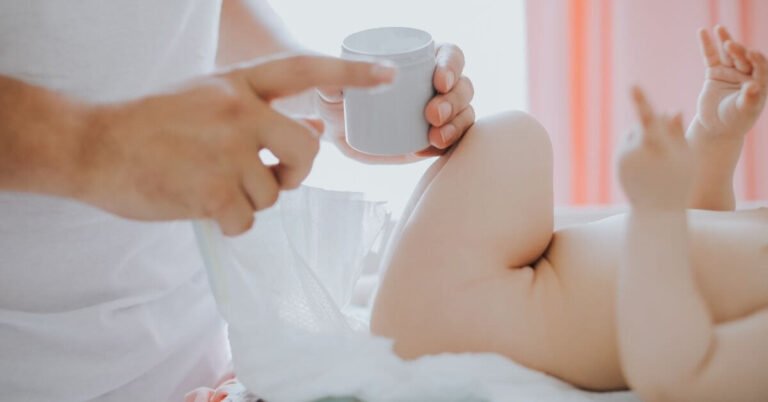Sunburn in babies: Best tips for treatment and prevention
AFFILIATE DISCLAIMER: SOME OF THE LINKS IN THIS POST ARE AFFILIATE LINKS. IF YOU USE THESE LINKS TO BUY SOMETHING, WE MAY EARN A COMMISSION. SEE FULL DISCLAIMER.
Never take sunburn in babies lightly. It can severely harm a baby. The problem is that it will only show several hours after exposure to the sun. How do you know if your baby has sunburn? You may notice that your baby’s skin is red and warm and he or she is not feeling well.
It often starts with a nice day at the beach or by the pool. And when you come home, your baby’s skin starts showing signs of sunburn. So what can you do as a parent to treat mild sunburn at home, and when do you need to seek help from a doctor?
Sunburn can happen when and where you least expect it.
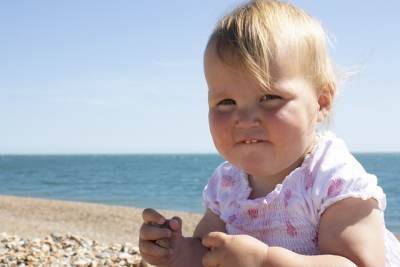
It is important for parents to know that infants can get sunburned even when it is cloudy. Similarly, the shade of an umbrella will only partly protect a baby. Additionally, babies in car seats can get sunburned through the car window as cars’ side windows do not filter out the harmful UVA rays.
It is also the belief of most parents that clothing protects a baby’s skin. For some materials, this may be true, but other materials have a sun protection factor equal to SPF 5. They may leave enough of the sun rays through to cause a sunburn in babies.
What Are The Symptoms Of Sunburn In Babies?
- Redness of the skin. Sunburn causes damage to the skin. This results in an inflammatory response of the body’s immune system. Due to enlarged blood vessels near the skin’s surface, the skin turns red and feels hot.
- Sunburn blisters. During a severe sunburn, the skin may develop blisters. The most challenging blister type is the sunburn blister, which is large and prone to infection.
- Swelling of the face or eyes. There are times when sunburn causes swelling due to fluid collection in the body tissues.
- Pain can also be a symptom of sunburn in babies.
- Can babies get sick from sunburn? Yes, fever, chills, nausea, and lethargy are signs of a severe baby sunburn, which requires immediate medical attention.
Related reading
What To Do When Your Baby Shows Mild Sunburn Symptoms?
In case of a mild sunburn, you can do the following:
- When your baby has a fever or pain, cool compresses and cool showers will help to relieve the symptoms.
- To stop the itching, you can apply calamine ointment or aloe vera. Putting the bottle in the fridge for half an hour before applying the lotion gives an extra cooling effect. Additionally, adding baking soda or oatmeal to the baby’s bathwater may give some relief. Don’t give antihistamines for itching to babies under six months of age before first consulting your doctor.
- You can give Ibuprofen for pain relief and swelling. Call your doctor for the correct dose for your child.
- Leave blisters alone, as breaking them can cause an infection.
- Make sure your baby gets plenty of fluid that will help to prevent dehydration.
In most cases, you can easily treat your baby’s sunburn symptoms with these home remedies for sunburn. But with severe sunburns, it is advisable to seek medical help.
Is peeling the last stage of baby sunburn?
After a few days, it’s common for itching and peeling to occur, but that is part of the healing process. Peeling is the body’s way of getting rid of damaged cells. Although the skin renews itself, some damage may remain. Apart from all the discomfort and pain a sunburn may cause, this damage also increases skin cancer risk. This is why it’s vital to protect your child from sunburns with good sunscreen.
Make sure never to use butter, lard, margarine, vitamin E, petroleum jelly, honey, warm water, tea bags, or sunburn anesthetic sprays on sunburned skin.
How to prevent sunburn in babies?
Children should be protected from the sun from birth and throughout their lives. The first 18 years of life account for 60 to 80 percent of an individual’s lifetime exposure to the sun.
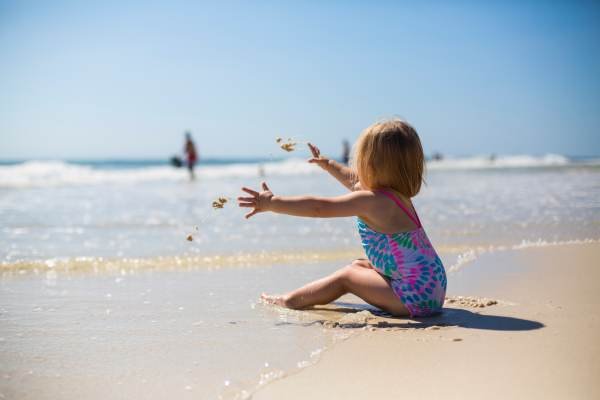
According to The American Academy of Dermatology, the most effective method of preventing sunburn in children over 6 months old is to follow the following tips:
- You should keep your baby in the shade. Keeping your baby out of direct sunlight is a good way to keep them safe. Whenever possible, put your baby in the shade. And if there is no shade, create your own with an umbrella, parasol, or stroller cover.
- Dress infants and toddlers in sun-protective clothing. Shirts and pants made of lightweight fabric with long sleeves are ideal. Your baby should wear a wide-brimmed hat and UV-protective sunglasses whenever you are outside.
- Use sunscreen sparingly on children younger than six months old. In cases where shade and adequate clothing are unavailable, parents and caregivers may apply water-resistant sunscreen with an SPF of at least 30 to their children’s skin. Baby’s sensitive skin is less likely to react to sunscreens containing titanium dioxide or zinc oxide. Sunscreen should be reapplied every two hours or after swimming.
- Protect your baby from getting overheated. Don’t forget to provide plenty of fluids on hot days. You should take your baby inside if he or she is fussy, overly crying, or has red skin.
Why is baby sunburn an emergency?
There are a lot of dangers associated with sunburn in babies.
- If you were burned as a child, even once or twice, you would be more likely to develop melanoma and other skin cancers.
- It is common for the skin to blister as a result of severe sunburn. Infected sunburn blisters can lead to scarring if they break.
- Babies are particularly prone to dehydration after extended sun exposure.
- Aside from sunburn, babies are also prone to heat-related illnesses like heat exhaustion and heat stroke, which can be life-threatening for babies.
When to contact the doctor?
- If large areas of the infant’s body are burned.
- If there are blisters and sores.
- When the baby gets a fever.
- If your baby starts sweating, vomiting, or fainting.
- If the baby shows signs of dehydration.
The first signs of dehydration are cracked lips, dry mouth and tongue, and no wet diaper for 6 hours or more. Other symptoms are sunken eyes, no tears, and a sunken fontanel (soft spot on baby’s scalp).
Besides getting sunburn, hot weather may cause a heat rash. Find out what to do about a heat rash due to too much sweating in hot and humid weather.
Source: Healthychildren.org – Sun Safety

